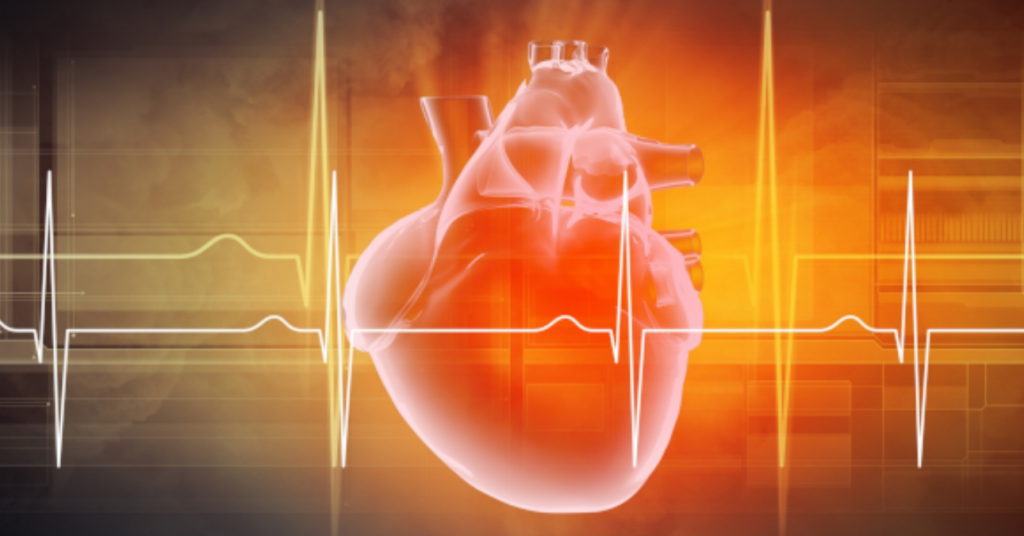
[ad_1]
 By GreenMedInfo Analysis Group
By GreenMedInfo Analysis Group
They’re smaller than a grain of sand, however they could be inflicting a storm in your arteries. Dive into the world of nanoplastics, the invisible risk that could be contributing to coronary heart illness.
In recent times, issues have been rising over the widespread presence of plastics within the setting, notably the emergence of nanoparticles of plastic, generally known as nanoplastics.1 These microscopic plastic particles, measuring lower than 100 nanometers in measurement, have been present in numerous ecosystems, together with oceans, freshwater our bodies, and even within the air we breathe.2,3 And latest analysis exhibits that there could also be as many as 240,000 nanoplastic particles in each bottle of water you buy. Whereas the environmental affect of plastic air pollution has been well-documented, rising analysis means that nanoplastic publicity could have profound implications for human well being, together with its potential hyperlink to coronary heart illness.
New Analysis Highlights the Cardiovascular Dangers of Nanoplastic Publicity:
A latest research, revealed within the journal “Journal of Hazardous Supplies” (DOI: 10.1016/j.jhazmat.2024.133583)
Understanding the Research:
On this analysis, PS NPs with a diameter of 100 nanometers had been used to simulate nanoplastic publicity. The research aimed to discover whether or not PS NPs publicity might result in atherosclerosis, a cardiovascular situation characterised by the buildup of lipids, irritation, and oxidative stress. The researchers performed a collection of experiments each in vitro and in vivo to evaluate the affect of PS NPs.
Key Findings from the Research:
Accumulation of Lipids: The research discovered that PS NPs publicity, together with oxidized low-density lipoprotein (ox-LDL), induced important lipid accumulation in macrophages, particularly RAW264.7 macrophages. This accumulation of lipids is a trademark of atherosclerosis improvement.4
Atherosclerotic Plaque Formation: Utilizing ultrasound biomicroscopy (UBM), the researchers noticed the emergence of atherosclerotic plaques on the aortic arch of ApoE-/- mice after three months of publicity to PS NPs. Oil-red O and hematoxylin-eosin (H&E) staining additional confirmed the deposition of lipids and plaque formation on the mice’s aortic root.4
Disturbances in Lipid Metabolism: The research indicated that the event of atherosclerotic illness within the mice was related to disturbances in lipid metabolism and oxidative stress harm within the liver. This means a systemic affect of PS NPs publicity on lipid regulation and irritation.4
Implications for Cardiovascular Well being:
These findings elevate important issues in regards to the potential cardiovascular dangers related to nanoplastic publicity. Atherosclerosis is a heart problems intently linked to irregular lipid metabolism, irritation, and oxidative stress. The research means that PS NPs could set off these processes, probably contributing to the event of atherosclerosis and, by extension, coronary heart illness.4
Future Analysis and Environmental Implications:
Whereas this research supplies beneficial insights into the potential well being dangers of nanoplastic publicity, additional analysis is required to completely perceive the mechanisms concerned and set up a definitive hyperlink between nanoplastics and coronary heart illness in people.
These findings underscore the pressing want to deal with plastic air pollution and cut back the discharge of plastic nanoparticles into the setting. The wide selection of plastic functions and their persistence within the setting elevate issues in regards to the long-term affect on human well being. Efforts to reduce plastic waste, promote recycling, and develop sustainable alternate options — or higher but, internet constructive options — are important steps in mitigating these dangers.
In conclusion, the brand new analysis on PS NPs publicity and its affect on lipid metabolism and atherosclerosis in mice provides to the rising physique of proof suggesting that nanoplastic publicity could have profound implications for cardiovascular well being. It highlights the significance of continued analysis, environmental stewardship, and proactive measures to deal with plastic air pollution and shield human well-being.
References
1. Thompson, R.C., et al. (2004). Misplaced at sea: the place is all of the plastic? Science, 304(5672), 838.
2. Gigault, J., et al. (2018). Present opinion: What’s a nanoplastic? Environmental Air pollution, 235, 1030-1034.
3. Wright, S.L., et al. (2020). Atmospheric microplastic deposition in an city setting and an analysis of transport. Environmental Science & Expertise, 54(18), 11668-11677.
4. Wen, J., et al. (2024). Lengthy-term polystyrene nanoplastic publicity disrupts hepatic lipid metabolism and causes atherosclerosis in ApoE-/- mice. Journal of Hazardous Supplies, DOI: 10.1016/j.jhazmat.2024.133583.
The GMI Analysis Group (GMIRG) is devoted to investigating crucial well being and environmental problems with the day. Particular emphasis will likely be positioned on environmental well being. Our centered and deep analysis will discover the various methods by which the current situation of the human physique instantly displays the true state of the ambient setting.
Disclaimer: This text will not be supposed to supply medical recommendation, prognosis or remedy. Views expressed right here don’t essentially replicate these of GreenMedInfo or its employees.
Supply: GreenMedInfo
[ad_2]
